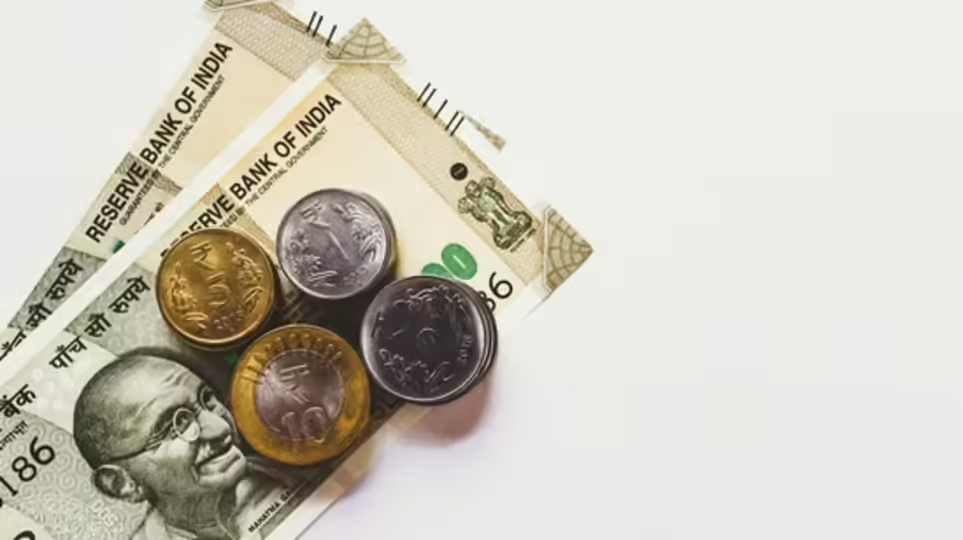Indian Rupee Hits All-Time Low of 87.29: Global Trade Tensions Spark Market Chaos
Mon, 3 Feb 2025

The Indian rupee touched a record low of 87.29 against the US dollar in early trade, sending shockwaves through the financial markets. This unprecedented decline comes amid growing fears of a global trade war, fueled by the recent announcement of tariffs by US President Donald Trump. The currency's sharp fall has left investors and economists concerned about the potential ripple effects on India's economy, which is already grappling with inflationary pressures and a widening trade deficit. The rupee's downward spiral is largely attributed to the escalating trade tensions between the United States and its major trading partners, including China and the European Union. President Trump's decision to impose hefty tariffs on steel and aluminum imports has sparked fears of retaliatory measures, creating an atmosphere of uncertainty in global markets. As investors flock to the safety of the US dollar, emerging market currencies like the rupee have borne the brunt of the sell-off. The dollar's strength has been further bolstered by expectations of higher interest rates in the US, making it an even more attractive option for investors seeking stability. In addition to external factors, domestic issues have also played a significant role in the rupee's decline. India's widening current account deficit, driven by rising oil prices and a surge in gold imports, has put additional pressure on the currency. The Reserve Bank of India (RBI) has been actively intervening in the forex market to stabilize the rupee, but its efforts have been largely overshadowed by the global turmoil. Analysts believe that the central bank may need to take more aggressive measures, such as raising interest rates, to stem the currency's slide and restore investor confidence. The rupee's depreciation has far-reaching implications for the Indian economy. A weaker currency makes imports more expensive, which could lead to higher inflation and erode consumer purchasing power. Industries that rely heavily on imported raw materials, such as electronics and automobiles, are likely to face increased production costs, potentially leading to higher prices for end consumers. On the other hand, exporters stand to benefit from a weaker rupee, as it makes Indian goods more competitive in the global market. However, the overall impact on trade remains uncertain, given the volatile nature of the current global economic environment. Investors and businesses are closely monitoring the situation, as the rupee's volatility adds to the challenges of navigating an already complex economic landscape. The stock market has also felt the heat, with the benchmark indices witnessing sharp declines in tandem with the rupee's fall. Market participants are bracing for further turbulence, as the trade war rhetoric shows no signs of abating. The uncertainty has prompted many investors to adopt a cautious approach, with some opting to move their funds to safer assets. The Indian government, meanwhile, is walking a tightrope as it seeks to balance economic growth with the need to stabilize the currency. While policymakers have expressed confidence in the economy's fundamentals, they are also aware of the need to address the external vulnerabilities that have contributed to the rupee's decline. Measures to attract foreign investment, boost exports, and reduce the trade deficit are likely to be high on the agenda in the coming months. However, the effectiveness of these measures will depend on how the global trade scenario evolves and whether the US and its trading partners can reach a resolution to their disputes. For the common man, the rupee's fall is a cause for concern, as it could lead to higher prices for everyday goods and services. From fuel to electronics, the cost of living is expected to rise, putting additional strain on household budgets. The government and the RBI will need to work in tandem to mitigate the impact on consumers and ensure that the economy remains on a stable footing. While the situation is undoubtedly challenging, experts believe that India's strong macroeconomic fundamentals and resilient financial system will help it weather the storm. As the world watches the unfolding trade war with bated breath, the fate of the Indian rupee hangs in the balance. The coming weeks and months will be crucial in determining whether the currency can recover from its historic lows or if further depreciation is on the cards. For now, all eyes are on the global economic developments and the actions of policymakers, as they strive to navigate these uncertain times. The hope is that cooler heads will prevail, and a resolution to the trade tensions will be found before the situation spirals out of control. Until then, the rupee's journey remains a story of resilience and uncertainty, reflecting the broader challenges facing the global economy. In conclusion, the Indian rupee's record low against the US dollar is a stark reminder of the interconnectedness of the global economy and the far-reaching consequences of geopolitical decisions. As trade war fears continue to dominate the headlines, the need for prudent economic management and international cooperation has never been greater. While the road ahead may be fraught with challenges, India's ability to adapt and innovate will be key to overcoming the current crisis and emerging stronger on the other side.
